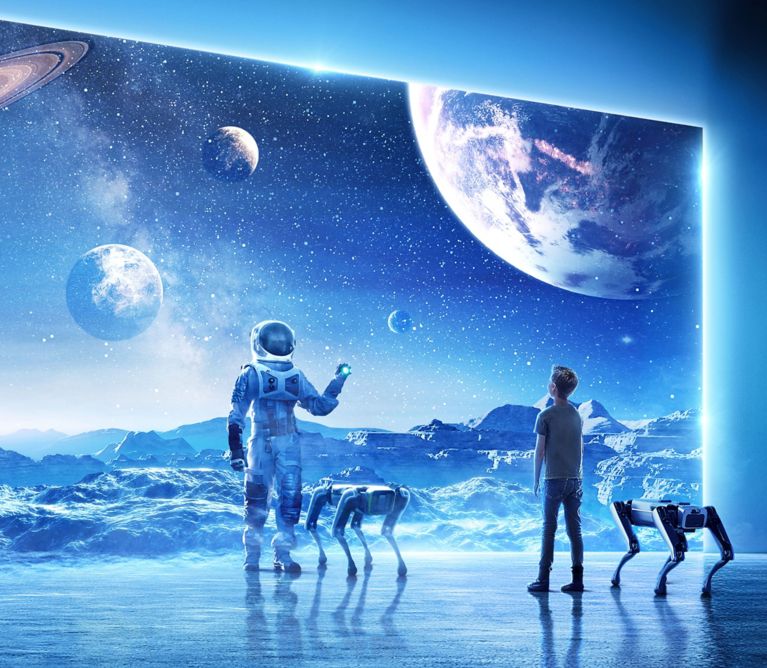- Hyundai Motor to share its vision for robotics in the real world and metaverse under the theme ‘Expanding Human Reach’ to fulfill unlimited freedom of mobility
- Company to pioneer new ‘Metamobility’ concept, going beyond physical movements through robotics and the metaverse to affect change in the real world
- … envisions that distinctions between future mobilities will become blurred through extended robotics technologies such as AI and autonomous driving
- … to explore the possibilities of diverse mobilities such as automobiles and UAM becoming smart access devices to the metaverse platform
- … to expand mobility solutions to Metamobility, using robots as a medium between the real and virtual worlds
- Company to also introduce new Mobility of Things (MoT) concept wherein traditionally inanimate objects will gain mobility using robotics
- … to also reveal Plug & Drive (PnD) and Drive & Lift (DnL) modular platforms as all-in-one solutions for its unlimited MoT ecosystem
- Executive Chair Euisun Chung: “We envision future mobility solutions made possible by advanced robotics — even expanding our mobility solutions to Metamobility”
- Diverse applications of PnD and DnL modules, including the recently revealed Mobile Eccentric Droid (MobED) as well as Boston Dynamics’ Spot® and AtlasTM, to be on display at the Hyundai Motor booth
- Booth visitors to experience the company’s leading robots as well as its vision for Metamobility, from Jan. 5-7
The company’s press day event was also livestreamed via Hyundai Motor’s YouTube channel.
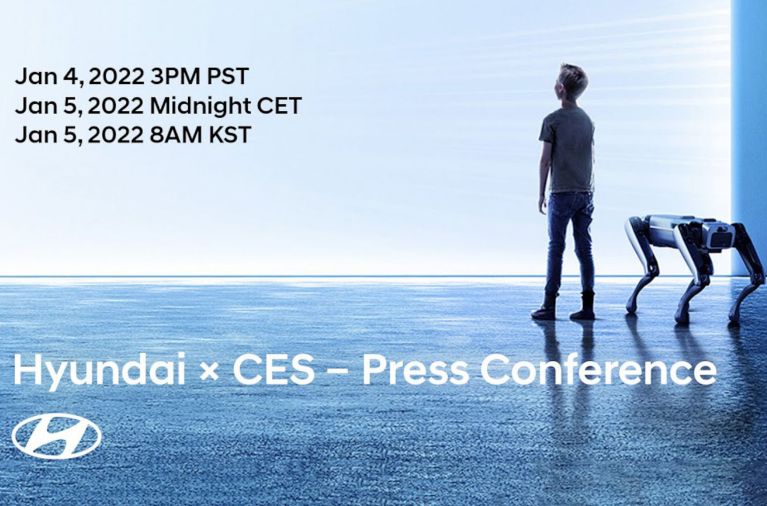
Hyundai x CES | Hyundai Press Conference at CES 2022
Euisun Chung, Executive Chair of Hyundai Motor Group, opened the presentation, followed by Dong Jin Hyun, Vice President and Head of Hyundai Motor Group Robotics Lab; Chang Song, President and Head of Transportation-as-a-Service (TaaS) Division of Hyundai Motor Group; and Marc Raibert, Founder and Chairman of Boston Dynamics. They were joined by Ulrich Homann, Corporate Vice President and Distinguished Architect, Cloud+AI at Microsoft.
Under the main theme of ‘Expanding Human Reach’, Hyundai Motor’s presentations reflected how the company’s robotics business will drive the paradigm shift towards future mobility, going beyond the traditional means of transportation to fulfill unlimited freedom of movement for humankind.
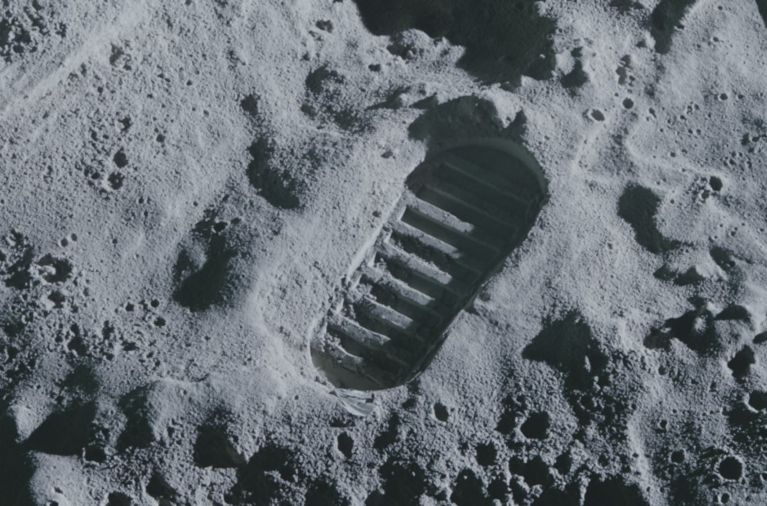
Robotics is an essential part of Hyundai Motor’s transformation into a smart mobility solution provider. Having acquired Boston Dynamics, an innovator in the field, Hyundai Motor has sharpened its focus on advancing robotics to enhance people’s lives through a range of mobility solutions. The company sees robotics and mobility as complementary in that one accelerates development of the other, and vice versa. Together, they form a synergistic combination that will add value to the business and drive progress for humanity, starting with a robotics-based Mobility of Things (MoT) ecosystem.
In support of its future vision for robotics and mobility, the company revealed its new concept of ‘Metamobility’, with the goal of pioneering a smart device-metaverse connection that will expand the role of mobility to virtual reality (VR), ultimately allowing people to overcome the physical limitations of movement in time and space. Hyundai Motor also shared its vision of how robots will act as a medium between the real world and virtual spaces, enabling users to make changes in the metaverse to be reflected in reality.
The company envisions that the distinctions between future mobilities will be blurred through the further development of robotics technology, such as AI and autonomous driving. Diverse mobilities, including automobiles and Urban Air Mobility (UAM) will also serve as smart devices for access to the metaverse platform.
At Hyundai, we are harnessing the power of robotics to achieve great things. We envision future mobility solutions made possible by advanced robotics – even expanding our mobility solutions to Metamobility. This vision will enable unlimited freedom of movement and progress for humanity.
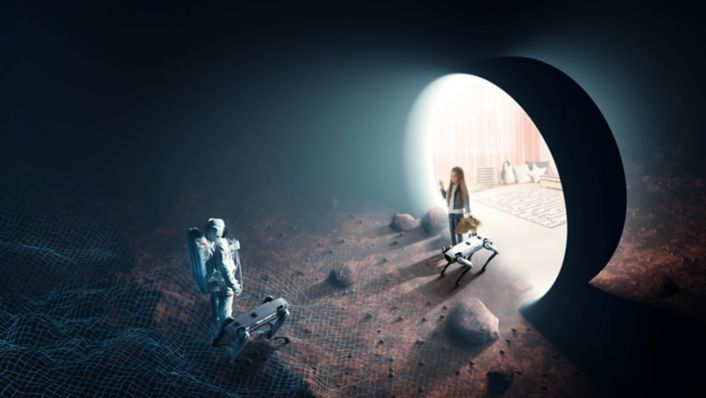
Connecting real-world movement with the metaverse via robots and ‘Metamobility’
During Hyundai Motors’ CES presentation, Hyundai Motor Group President and Head of Transportation-as-a-Service (TaaS) Division Chang Song and Microsoft Corporate Vice President Ulrich Homann joined Boston Dynamics’ Marc Raibert to discuss the metaverse and Metamobility.
With the metaverse set to become a daily space for people in the future, the company expects the possible emergence of a new type of metaverse platform in which the distinction from reality could disappear, breaking away from the concept of VR as the world knows it today.
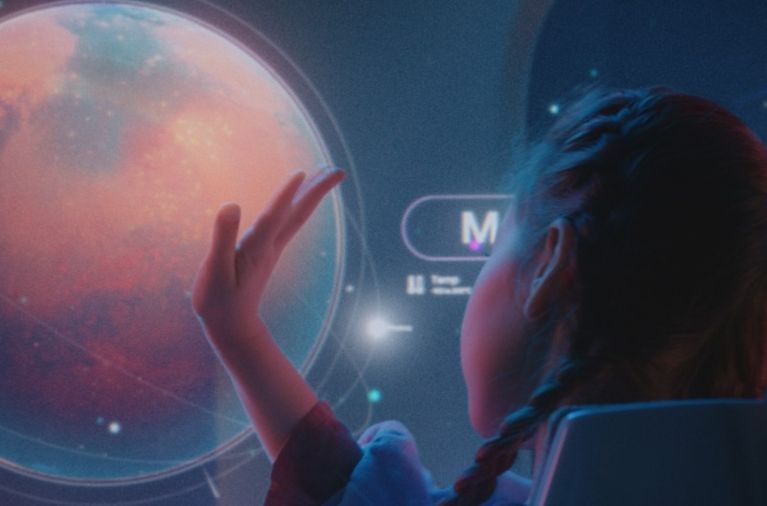
What only used to be a virtual experience due to technological limitations can now be reflected in the real world through the connection of smart devices, enabling users to have unlimited freedom of movement between the two worlds. Hyundai Motor defines the concept of such experiences as Metamobility.
Hyundai Motor expects that mobilities, such as automobiles and UAM, will serve as smart devices to access virtual spaces, while robotics will act as a medium to connect the virtual and real worlds. For example, an automobile that connects to virtual spaces can allow users to enjoy various in-car VR experiences. Depending on the user’s needs, a car can be transformed into an entertainment space, a meeting room for work or even a 3D video game platform.
Unlike the current incarnation of VR where user experiences are not reflected in the real world due to technological limitations, future metaverse users will be able to affect changes in the real world through robotics and digital twin technology, a virtual representation of a physical object, place or process that will be made possible by further advancements in sensors and actuators.
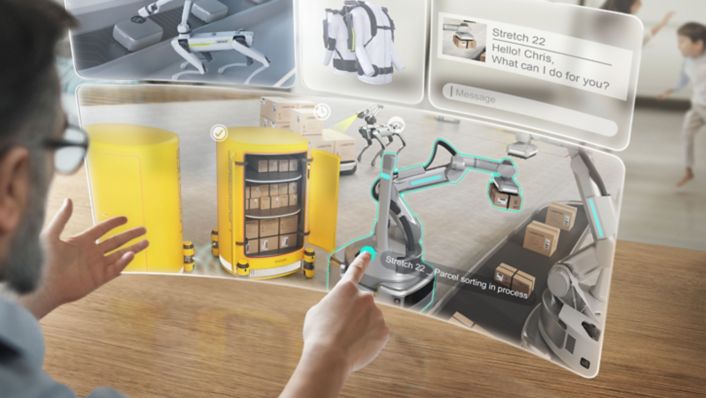
For example, when a user accesses a digital twin of their home in the metaverse while away from their physical home, they will be able to feed and hug a pet in Korea through the use of an avatar robot. This will allow users to enjoy real world experiences through VR.
Through Metamobility, robots will help people overcome the physical limitations of time and space, providing a means for connecting and interacting in the metaverse. Hyundai Motor envisions a metaverse using robots as a medium between the real and virtual worlds, enabling people to actually change and transform things in the real world through a metaverse and robot connection.
This metaverse-robot connection will allow the user to guide a robot in the real world, such as in a smart factory. This will enable a next-generation digital model for plant management and manufacturing by enabling remote specialists to connect to all machines and assets within the factory, and perform remote tasks through a direct physical connection using robots and VR. For example, a worker would interact with a robotic avatar in the metaverse via VR interface and hand controls to manipulate things in the real world using a proxy robot at the remote work site.
The idea behind Metamobility is that space, time and distance will all become irrelevant. By connecting robots to the metaverse, we will be able to move freely between both the real world and virtual reality. Going one step further from the immersive ‘be there’ proxy experience that the metaverse provides, robots will become an extension of our own physical senses, allowing us to reshape and enrich our daily lives with Metamobility.
As virtual and physical environments merge, Microsoft is bringing people, places and things together with the digital world. Across the Microsoft Cloud, from Azure IoT to Azure Digital Twins, Dynamics 365 Connected Spaces and Microsoft Mesh, we’re building a metaverse platform for organizations, enabling a new perspective on the way how people move and interact in physical spaces like factories.
Robots that move people and things beyond imagination and limitation
Hyundai Motor also revealed its Plug & Drive (PnD) and Drive & Lift (DnL) modular platforms as all-in-one solutions for its unlimited Mobility of Things (MoT) ecosystem, wherein traditionally inanimate things, from small objects to community spaces, will gain mobility using the company’s robotics technologies.

Dong Jin Hyun, Vice President and Head of Hyundai Motor Group Robotics Lab, highlighted the new PnD module, a single-wheel robotics platform that combines intelligent steering, braking, in-wheel electric drive and suspension hardware that can be scaled up or down, for any purpose, size or application. LiDAR and camera sensors allow a PnD-enabled object to move autonomously.
With infinite flexibility and scalability, the PnD module can provide mobility to normally inanimate things, from small objects to community spaces. Its applications seem limitless, providing freedom of movement for people with disabilities, automated logistics, reconfigurable interior space and public transportation with individual compartments for social distancing and last mile mobility.
In the world to come, we will not move our things, but things will actually move around us with the PnD module making traditionally inanimate objects mobile. We are directing all our ambitious robotics engineering and creative efforts towards realizing an even bigger vision than ever – the unlimited Mobility of Things ecosystem.
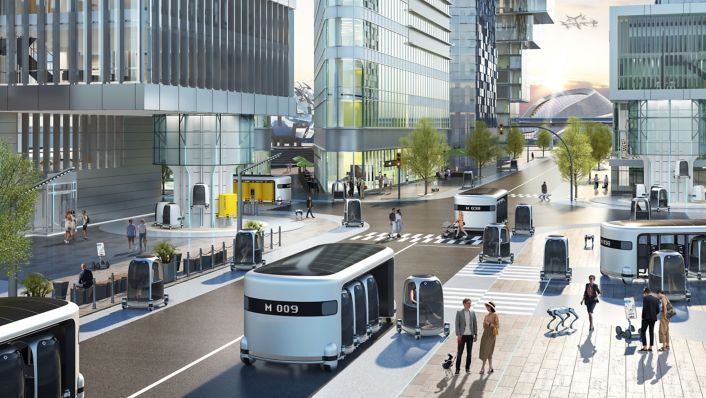
Hyundai Motor also exhibited the MobED (Mobile Eccentric Droid) small mobility platform that uses the DnL module, an eccentric wheel mechanism, combining the drive, steering and braking systems in one structure. With DnL mounted on each wheel, MobED can lift the platform up and down, so the body can stay level as MobED traverses uneven terrain or low barriers such as steps or speed bumps.
Boston Dynamics Founder and Chairman Marc Raibert also joined the presentation to show how Hyundai Motor and Boston Dynamics are already taking mobility beyond human physical limitations using current robotics technologies. Together, the two companies envision a future in which people and robots work together, improving safety, productivity and quality of life.
For example, Hyundai’s wearable robots, the Vest Exoskeleton (VEX) and Chairless Exoskeleton (CEX) as well as Boston Dynamics’ quadruped Spot® are supporting industrial work, and hold promise for other applications, even search-and-rescue missions.
We see a future where robots become more than just task-oriented tools, more than just machines. We believe in a future where robots become useful, trusted companions in our everyday lives.
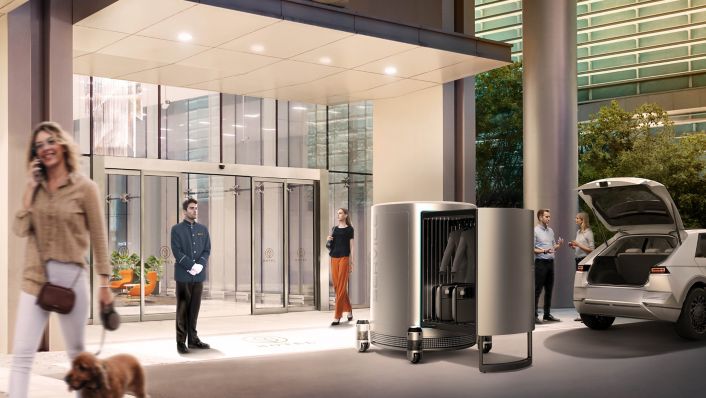
Experience the present and future of robots at Hyundai Motor’s show booth
For CES 2022, Hyundai Motor will open an exhibition booth to present how mobility in the real world can be advanced with its robots, including Spot® quadruped, PnD Personal Mobility module, L7 micro-mobility model and MobED small mobility platform with eccentric wheels. The four robot models are optimized to each module and video screens explain each robot’s special advantages.
The booth also features the Metaverse Zone where visitors can experience the virtual world to get a glimpse of the future robotics society. The zone’s four-sided LEDs provide an immersive experience where visitors can create personalized avatars and communicate with them in a virtual space. Afterwards, visitors can receive personalized avatar images and souvenirs, and enjoy various programs on stage, such as robot demonstrations and performances.
The list below outlines the company’s robots to be exhibited at the Hyundai Motor booth:
Personal Mobility – PnD
Specifications:
- 1,330 (W) * 1,250 (D) * 1,885 (H)
- (3D file based)
- Driving time: 1h
- Charging time: 2h
Personal Mobility is an individualized public transportation based on the PnD module. It provides a comfortable experience to the destination while protecting personal privacy. Also, it can provide private mobility with autonomous driving technology.
Logistics Mobility – PnD
Specifications:
- 1,300 (W) * 1,100 (D) * 1,800 (H)
- Door: 1,000 (W) * 400 (D) * 1,700 (H)
- (3D file based)
Logistics Mobility combines a commercial unit on top of a platform using four PnD modules. After long-distance movement being docked in a mother shuttle (large mobility), it can undock and move a short distance autonomously. It can execute an advanced first-to-last-mile delivery of goods in collaboration with Spot.
Service Mobility – PnD
Specifications:
- 1,300 (W) * 1,100 (D) * 1,800 (H)
- Door: 1,000 (W) * 400 (D) * 1,700 (H)
Service Mobility combines a butler-type unit on top of a platform that uses four PnD modules. It is a human-friendly mobility that plays the same role as a personal assistant by providing automated services, such as an information screen and baggage delivery at points where services have not been previously provided.
L7 – PnD
Specifications:
- 1,400 (W) * 1,900 (D) * 700 (H)
- (3D file based)
- Driving time: 1h
- Charging time: 2h
L7 is a micro-mobility based on a platform that combines four large PnD modules. With infinite wheel rotation, it can switch directions freely and drive even in a restricted space. It can be used for various types of mobility platforms, not only in transportation but also in logistics.
MobED – DnL
Specifications:
- 600 (W) * 880 (D) * 330 (H)
- (3D file based)
- Driving time: 1h
- Charging time: 2h
MobED (Mobile Eccentric Droid) is a mobile platform that combines four DnL modules. It can overcome the limitations of movement and enables stable driving on uneven surfaces, such as stairs. It can be combined with various modules and used as a micro-mobility to improve mobility for the elderly and the disabled.
MobED + screen – DnL
Specifications:
- 600 (W) * 880 (D) * 1,320 (H)
- Monitor: 720 (W) * 420 (H)
- (3D file based)
- Drive time: 1h, Charge time: 2h
MobED +screen also is a mobile platform that combines four DnL modules and a screen, allowing the device to become a mobile guide.
Spot®
Specifications:
- Arm: 210 (W) * 680 (D) * 420 (H)
- Body: 240 (W) * 860 (D) * 190 (H)
- Legs: 430 (W) * 100 (D) * 540 (H)
- Driving Time: 1.5 h
Spot® is an agile quadruped robot that can be equipped with an arm and camera. It can navigate with unrivaled mobility, allowing automated routine inspection tasks and data capture safely, accurately and frequently.
AtlasTM
Specifications:
- 1.5 meters high, weighs 80 kg, can move at 1.5 meters per second, and can lift a load of about 11 kg
AtlasTM is a bipedal humanoid robot with an advanced control system and state-of-the-art hardware that give it the power/balance to demonstrate human-level agility.

